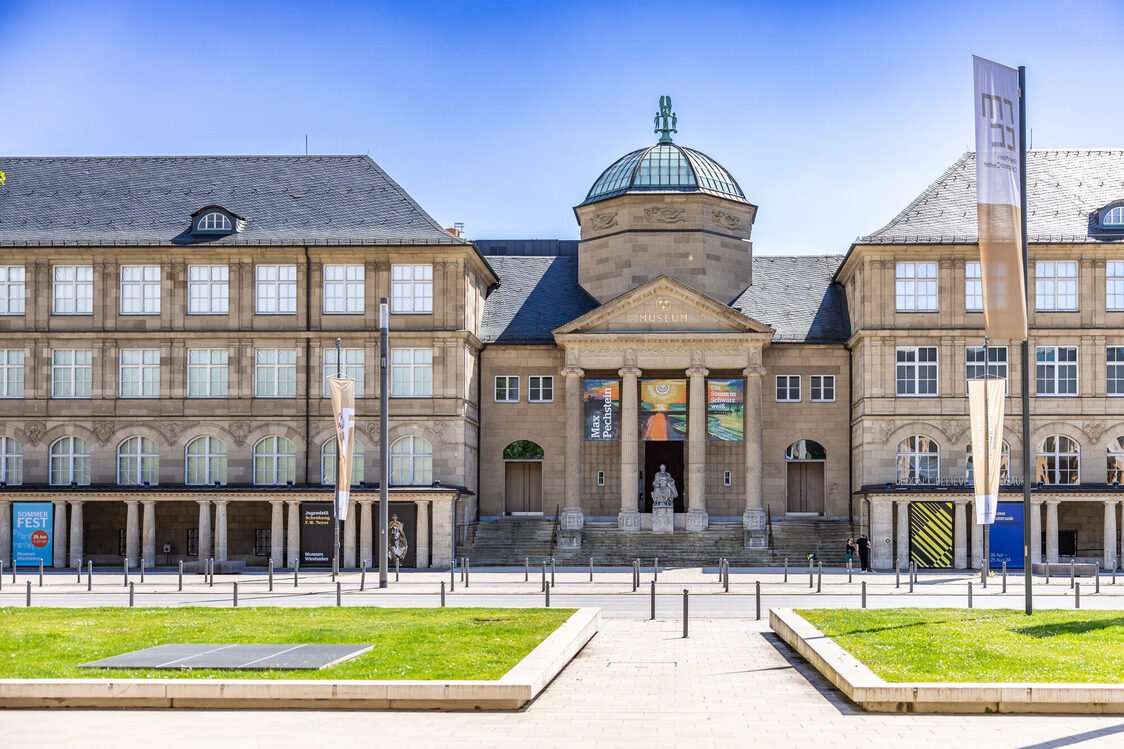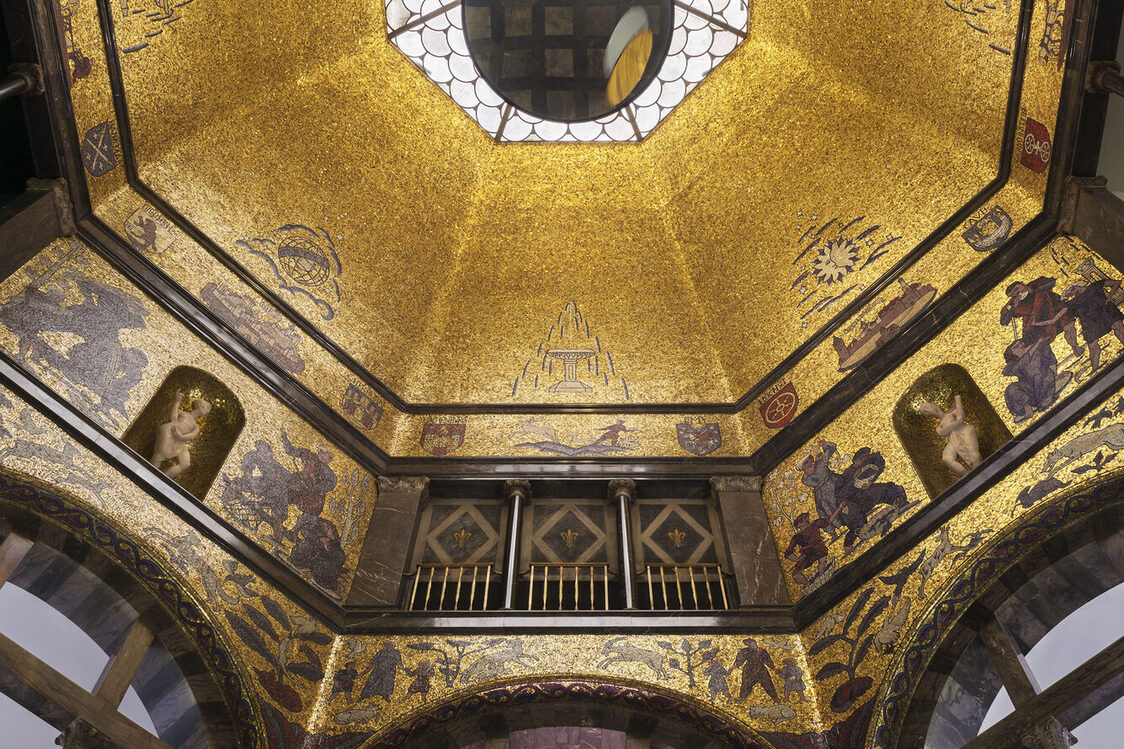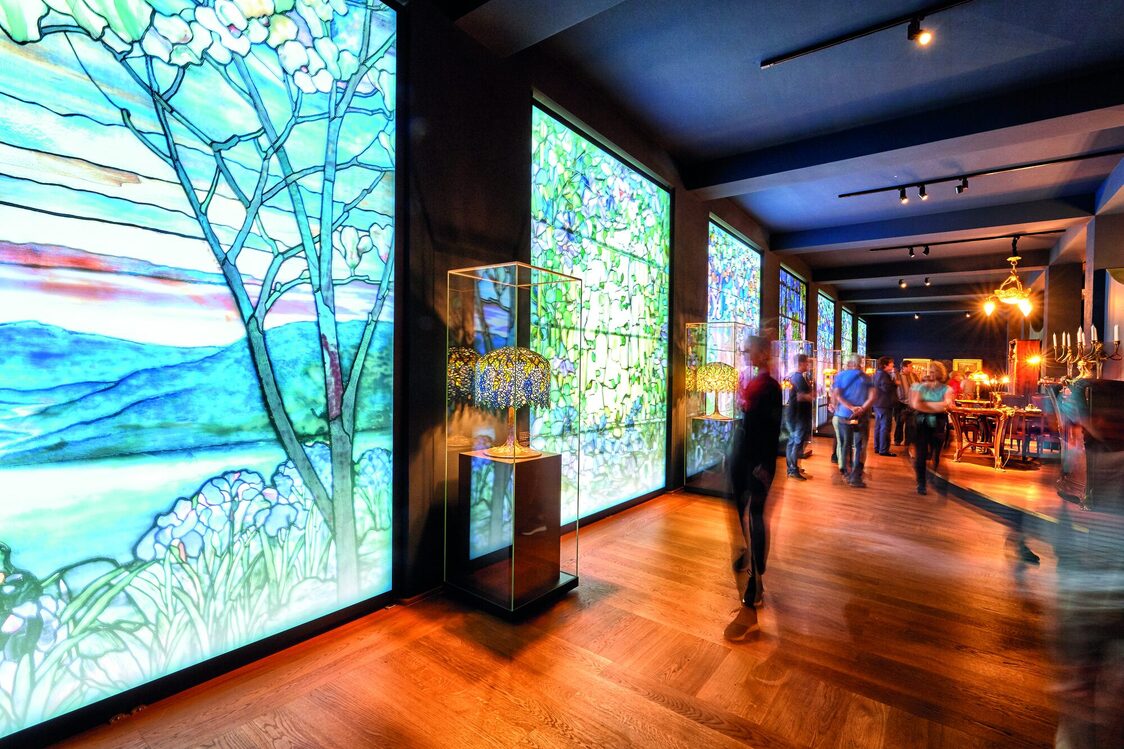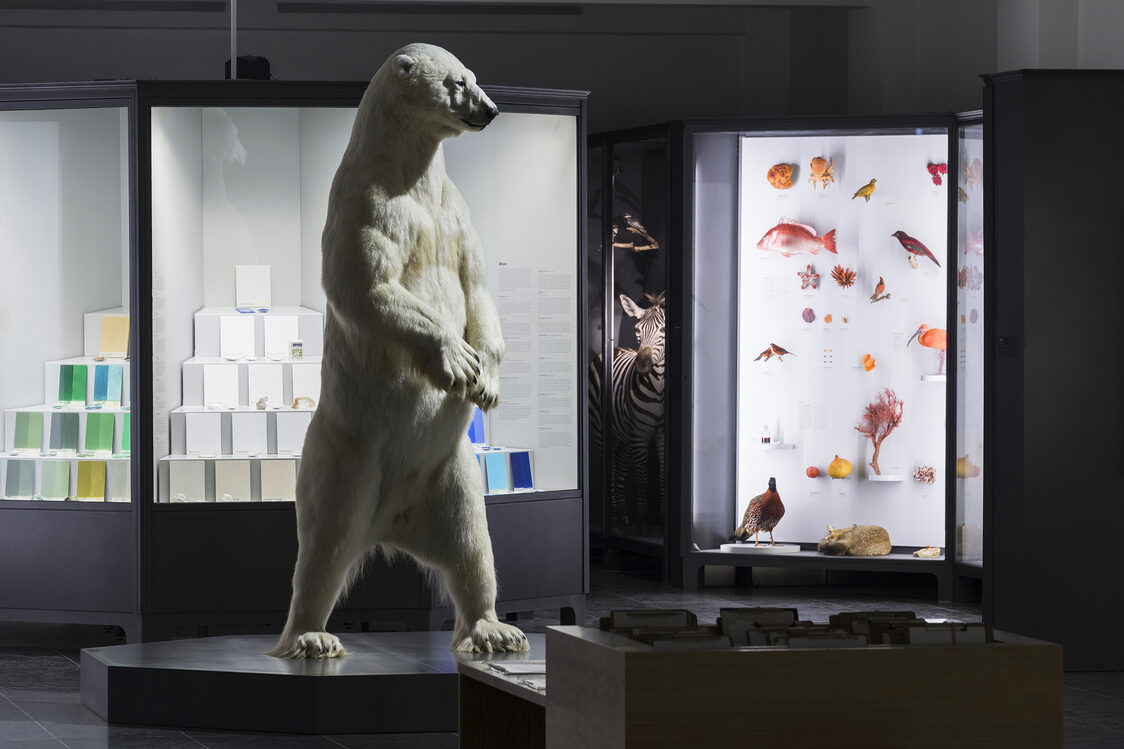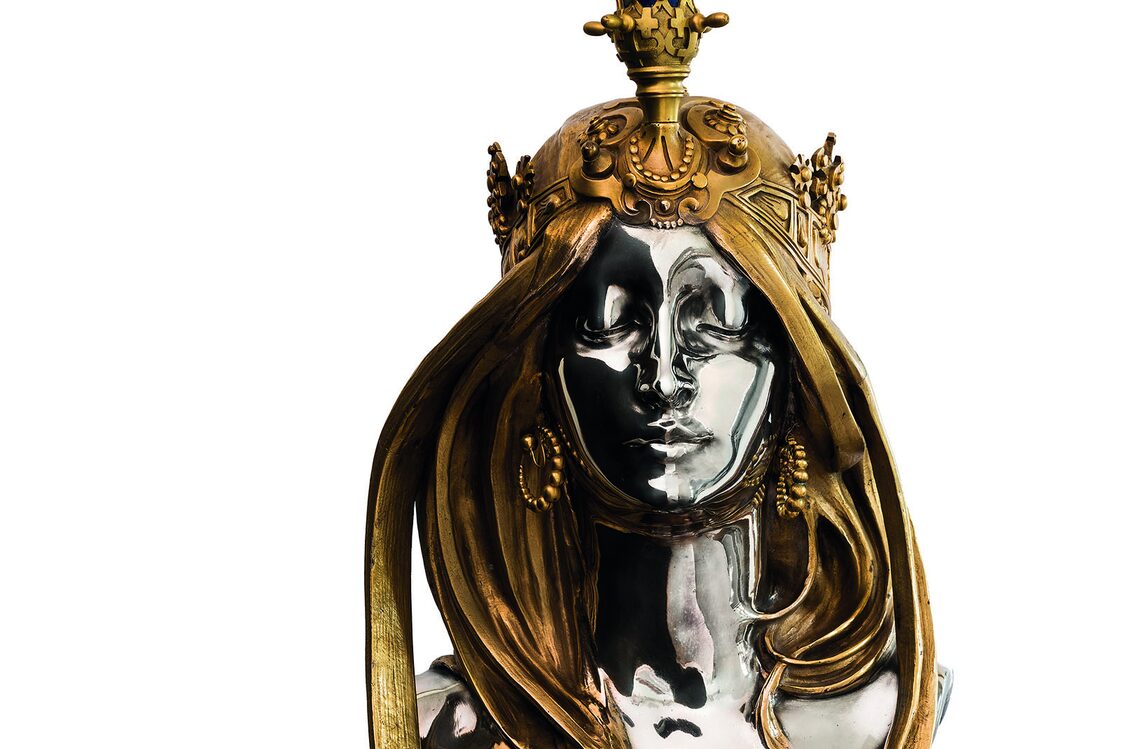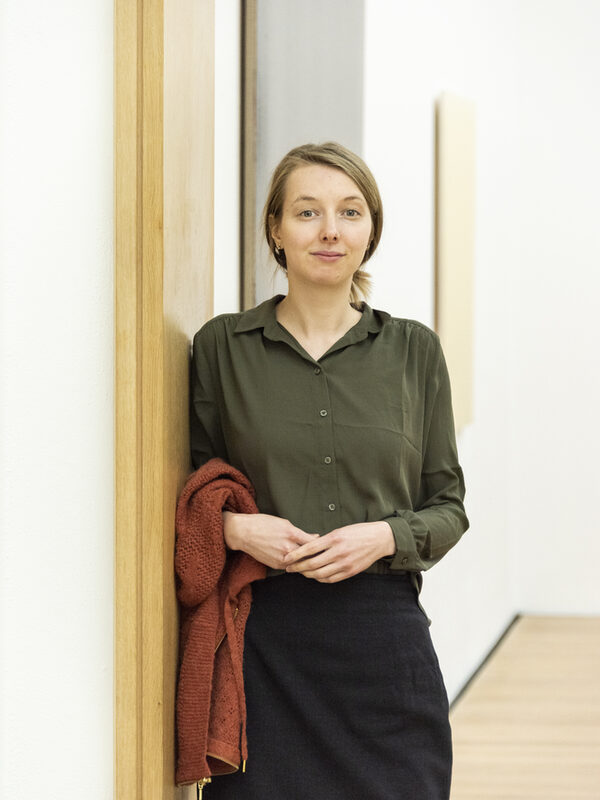On the road in the ... Museum Wiesbaden
The Museum Wiesbaden is the state museum for art and nature in Hesse. In a presentation that is unique in Germany, it displays works of art from the Middle Ages to the present day as well as exciting natural history collections. Susanne Hirschmann from the Museum Wiesbaden tells you what not to miss.
Fräulein Quellgeflüster: There is a sculpture of Goethe in front of the museum - why?
Susanne: Johann Wolfgang von Goethe visited Wiesbaden as a spa guest and noticed that the city had no public museum collection. In an exchange with his acquaintance, Baron Johann Isaac Freiherr von Gerning, he suggested that his collection should be made accessible to the public. The baron had inherited his father's considerable collection, which was famous for its natural history objects - including specimens that the scientist and artist Marian Sibylla Merian had brought back from her travels in Surinam. Gerning eventually left the collection to the state of Nassau in return for a life annuity - and so began the history of today's museum.
The Goethe monument in front of the museum commemorates this important impulse. The sculptor Hermann Hahn had the mythological father of the gods Zeus in mind when he created the monument. Hence the eagle. The sculpture is also intended to stand for intellectual strength and cultural education.
Fräulein Quellgeflüster: What is special about the Museum Wiesbaden?
Susanne: The Museum Wiesbaden is one of the three Hessian state museums. The special thing about our museum is that it combines art and nature in a presentation that is unique in Germany. On an area of 7,000 square meters, the exhibits in both areas range from natural history objects to contemporary art. Highlights of the art collections include the world's most important collection of works by Alexej von Jawlensky and the internationally renowned Art Nouveau donation by F. W. Neess. The permanent exhibition "Aesthetics of Nature" is a public favorite and combines both sections. A polar bear in full size, a cheetah in full flight - with more than 6,000 natural objects, the richly shaped and colorful diversity of species is presented.
"The highlights of the art collections include the world's most important collection by Alexej von Jawlensky and the internationally renowned Art Nouveau donation by F. W. Neess."
Fräulein Quellgeflüster: Which highlights should not be missed in the Natural History Collections?
Susanne: The permanent exhibition "Aesthetics of Nature" with its five themed rooms: Change, Color, Form, Movement and Time! Here, natural phenomena are explained and masterful animal specimens and models as well as dioramas invite you on a journey to the most diverse regions of the earth. My favorite is the starfish showcase in the form room. You can see large and small, colorful and spiny starfish. The camouflage showcases in the color room are also popular. They invite you to find all the animals in the diorama like in a hidden object picture.
Fräulein Quellgeflüster: And which ones in the art collections?
Susanne: Nine centuries of art enter into dialog with each other in the art collections. They range from the 12th century to the present day and are divided into the Old Masters, Art Nouveau, Classical Modernism and Modern and Contemporary sections. Anyone visiting the Old Masters exhibition rooms should definitely see Carl Spitzweg's "The Butterfly Catcher" or Anselm Feuerbach's "Nanna". In the Art Nouveau collection, I always make a detour to Alfons Mucha's bust "La Nature" - it is the "face" of the collection.
No visit to the Classical Modernism gallery rooms is complete without viewing the paintings of the Russian Expressionist Alexej von Jawlensky. In the modern and contemporary art section, the artists' rooms are a highlight. Entire exhibition rooms are dedicated to artists such as Rebecca Horn, Katharina Grosse and Angela Glajcar. There is a special highlight right in the entrance area: I like to lose myself in the optical illusion of Horn's installation "Jupiter in the Octagon" directly under the entrance dome.
Alexej von Jawlensky plays a special role in the Museum Wiesbaden ...
Susanne Hirschmann: At the heart of our art collection is the internationally most important collection of more than one hundred works by the Russian expressionist Alexej von Jawlensky. He was a member of the "Blauer Reiter" group of artists and spent the last 20 years of his life here in Wiesbaden. He was already closely associated with the museum at the beginning of the 20th century and many of his paintings came into the collection via the Wiesbaden Kirchhoff Collection, purchases and donations. The so-called Mona Lisa of our exhibition rooms is the "Lady with Fan". The expressive use of color and the striking contours clearly show how Jawlensky belonged to the avant-garde of his time and paved the way for modernism.
"With the donation, Wiesbaden has become a top Art Nouveau address and a must-see for design lovers."
Fräulein Quellgeflüster: The Art Nouveau collection is also a real highlight!
Susanne: The Art Nouveau collection donated by Ferdinand Wolfgang Neess opened in 2019. It is an extraordinary synthesis of the arts of Art Nouveau and Symbolism, which the private collector Ferdinand Wolfgang Neess built up over decades and entrusted to the museum during his lifetime. Over 570 objects - from paintings, lamps and seating furniture to vases - bring the lifestyle of the fin de siècle to life in a unique way at the Museum Wiesbaden. With a focus on France, the USA, Austria and Germany, top-class objects by the main representatives of the movement - Hector Guimard, Louis Majorelle, Fernand Khnopff, Henry van de Velde, Alfons Mucha, Émile Gallé, Franz von Stuck and Louis Comfort Tiffany - can be discovered. With the donation, Wiesbaden became a top Art Nouveau address and is a must-see for design lovers.
Good to know:
- On Long Thursdays (opens in a new tab), the Museum Wiesbaden is open until 9 pm. There are after-work tours, lectures, workshops and, in summer, wine and finger food on the museum forecourt. The museum café is open until 8.30 pm on Long Thursdays. The reduced price applies from 6 pm.
- Saturday is free day (opens in a new tab)! Admission to the Museum Wiesbaden is free on the first Saturday of every month. The focus is always on an exhibition for which there are guided tours and other activities.
- 2 museums. 2 days.1 discount (opens in a new tab). If you buy a full-price ticket at the Museum Wiesbaden Museum or the Museum Reinhard Ernst, you will receive reduced admission to the o1 discount (opens in a new tab). If you buy a full-price ticket at the Museum Wiesbaden Museum or the Museum Reinhard Ernst, you will receive reduced admission to the other museum. This "neighborhood discount" - the two museums are located next to each other - is valid on the day of purchase and the following day.
